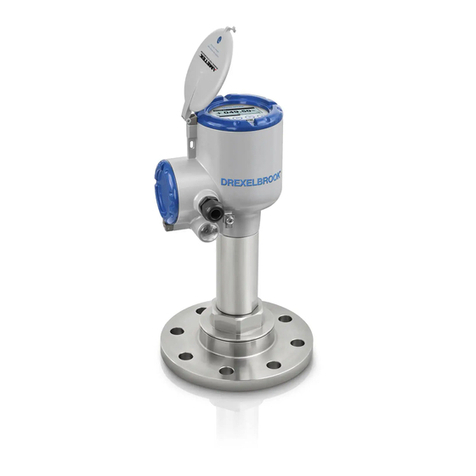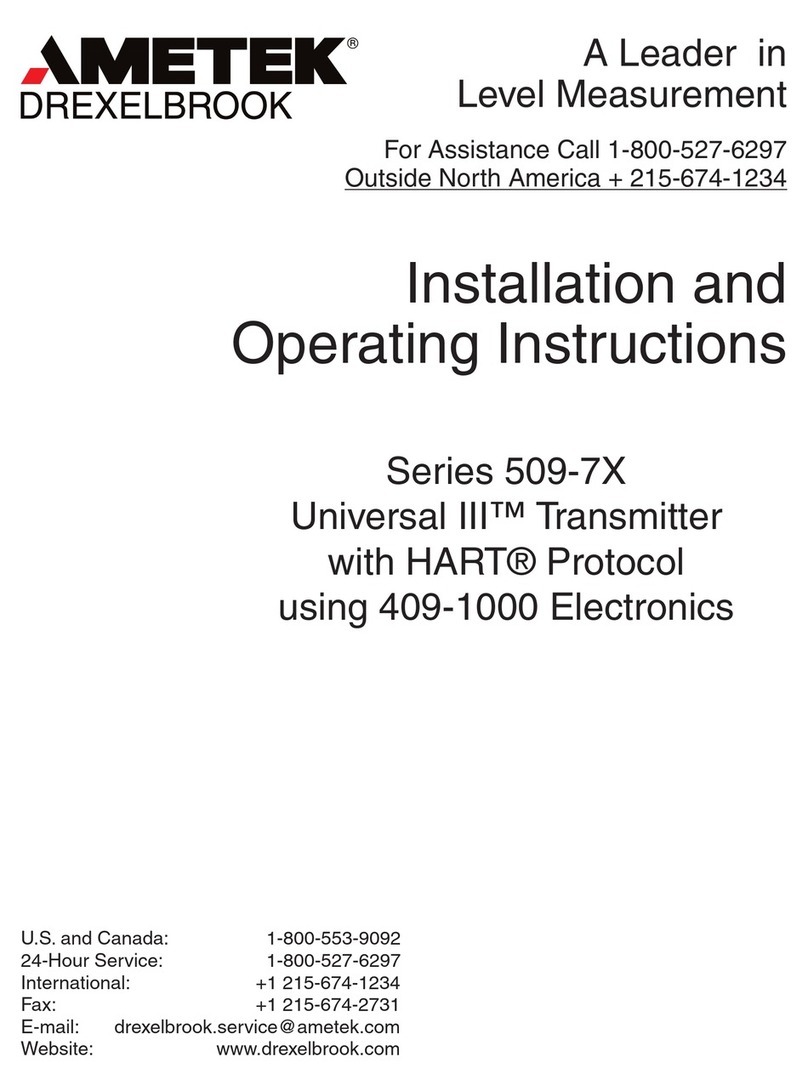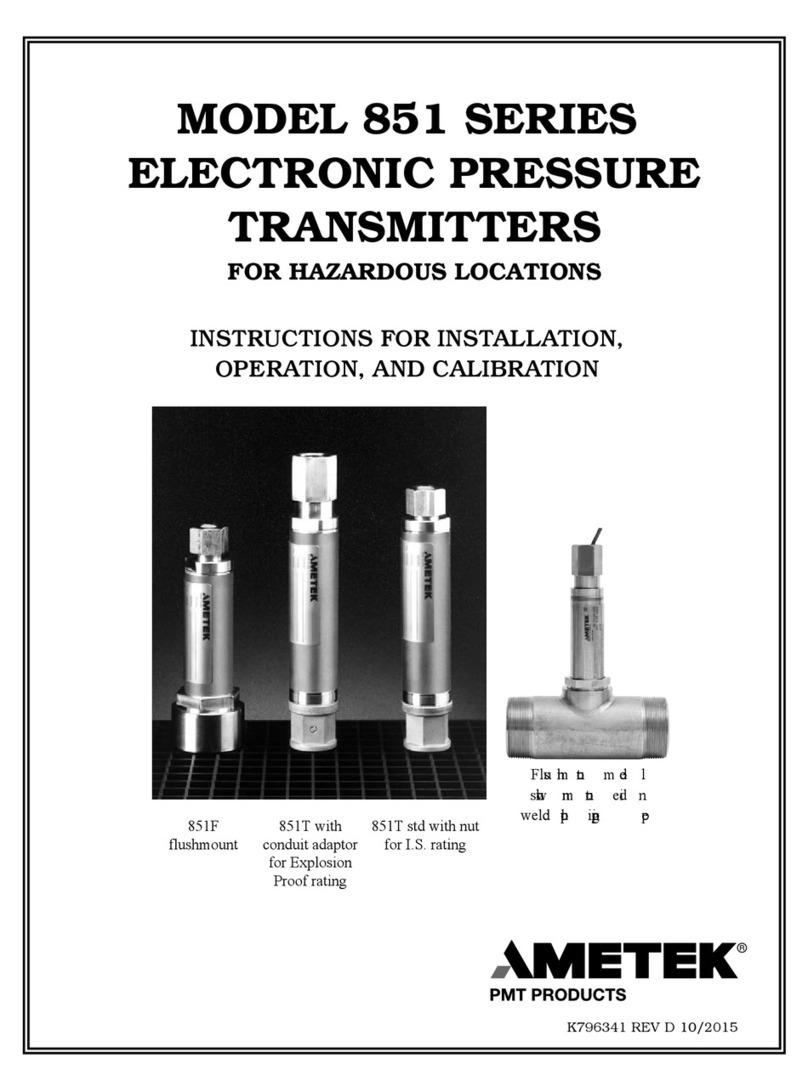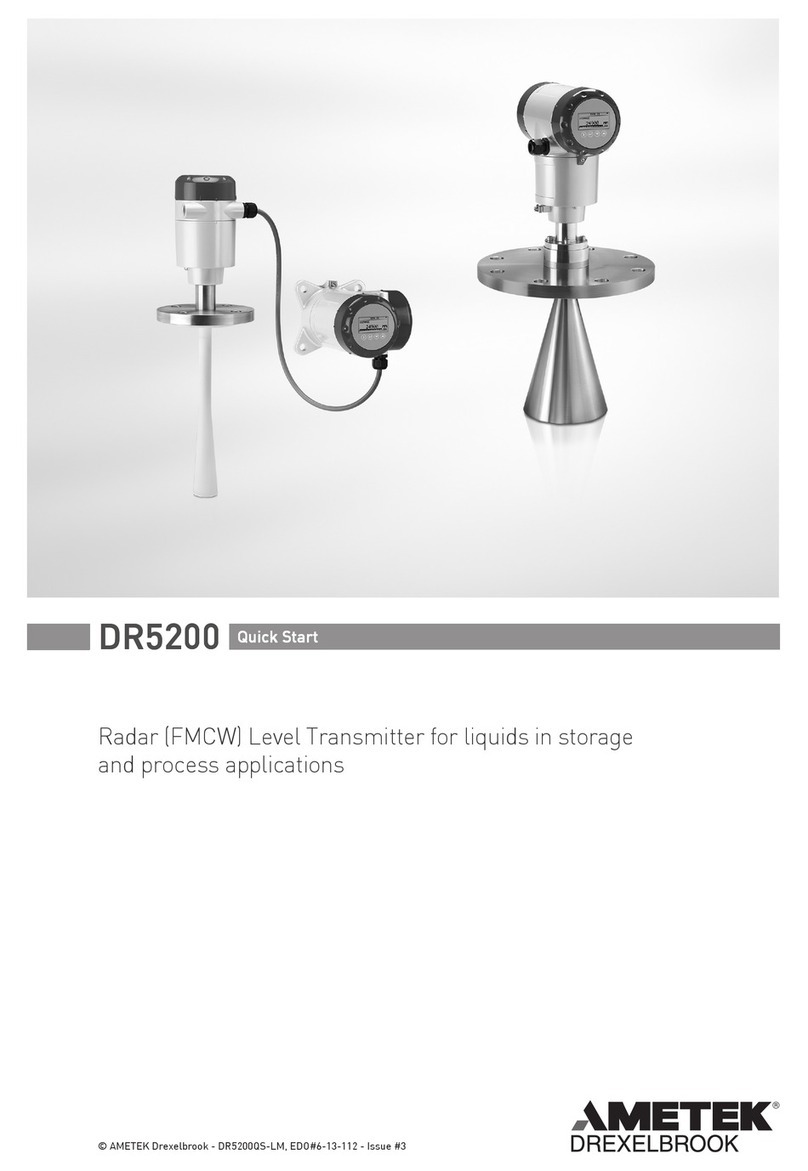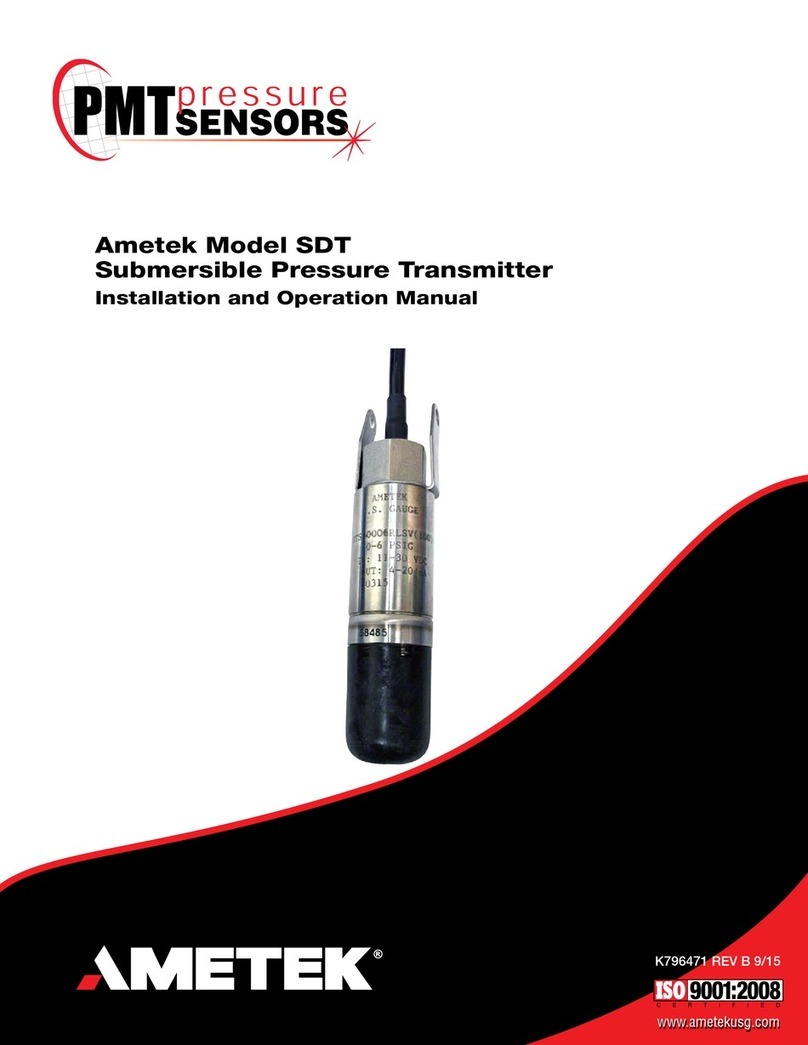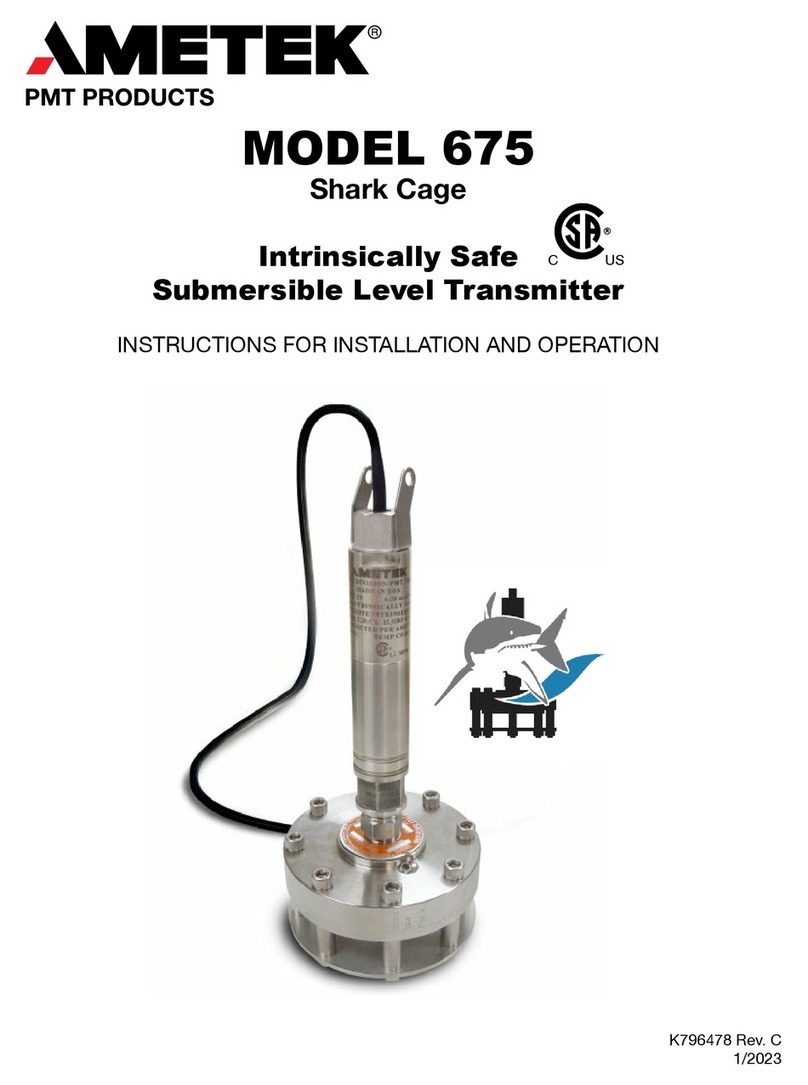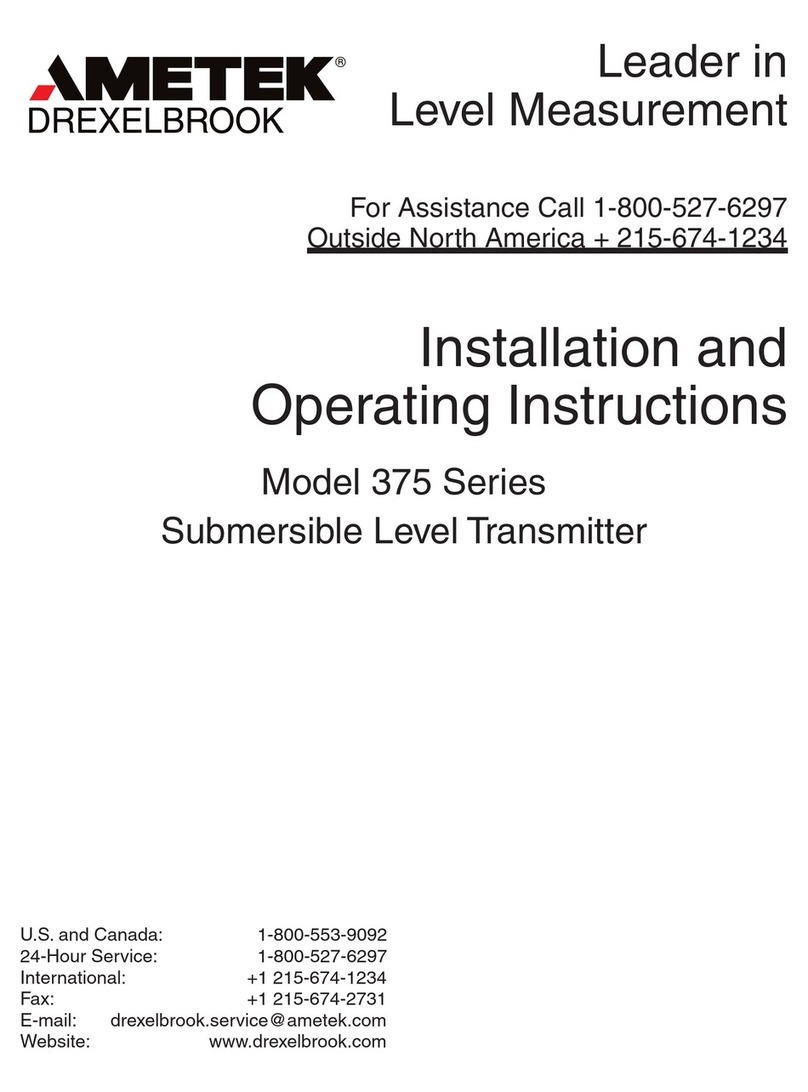
3
48-652 E4 Modulevel Displacer Level Transmitter - SIL
1.0 Introduction
1.1 Product Description
The E4 Modulevel is a loop-powered, two-wire, 24 VDC
level transmitter that uses simple buoyancy principles in
combination with a precision range spring and a highly
accurate LVDT (linear variable differential transformer) to
detect and convert liquid level changes into a
stable 4–20 mA output signal. The electronics are housed in
an ergonomic, dual-compartment enclosure that is angled
for ease of wiring and calibration.
The E4 Modulevel has microprocessor-based electronics
with HART compatible output, in addition to the standard
4–20 mA output. The E4 Modulevel supports the
FDT/DTM standard and a PACTware™PC software
package allows for additional configuration and trending
capabilities.
The linkage between the level sensing element and output
electronics provides a simple mechanical design and con-
struction. The vertical in-line design of the transmitter
results in low instrument weight and simplified installation.
The instrument comes in a variety of configurations and
pressure ratings for varied applications.
1.2 Theory of Operation
The E4 Modulevel Displacer Level Transmitter relies on the
principles of buoyancy to convert mechanical movement to
an electronic output.
The movement of the range spring, as it compresses or elon-
gates based on the volume of displacer submerged in the
liquid, causes movement of a special LVDT core attached to
the spring. The LVDT technology converts the movement
of the LVDT core within the LVDT to a stable 4–20 mA
output signal. The position of the core, with respect to a
primary and two secondary windings, induces voltage in
each winding. The comparison of the induced voltages
within the microprocessor of the E4 Modulevel results in
very accurate level or interface level output.
The E4 Modulevel can, alternatively, be set up to track the
changing density of a liquid over a known density range and
convert that into a stable 4–20 mA output signal. As the
density of the liquid changes, so does the mass of the liquid
displaced by the displacer. This resulting change in buoyancy
force on the displacer causes movement of the LVDT core
needed to convert the density change to the 4–20 mA signal.






